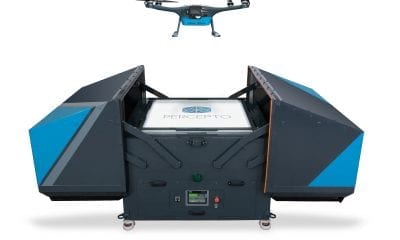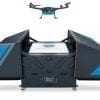Autonomous
Autonomous Landing of a Multirotor Drone on a Moving Platform: Thesis
Multi-rotor Unmanned Aerial Vehicles (UAVs) high maneuverability and their capability to hover, makes them an extensively used platform in many fields of applications. Due to the multiple rotors, they are extremely easy to steer, making them far more applicable for situations other than simply travelling from one point to another compared to their counterparts like planes and helicopters.
However, their limitations in flight time challenge the ambition of using multirotor UAVs in fully autonomous operations. Multi-rotor UAV’s are capable of delivering a lot of power but run through their battery extremely fast; and although this problem is almost certain to be fixed by research on more powerful batteries and energy harvesting mechanisms installed within the drones in the future, it is a realistic problem to consider a drone running out of battery along its path and crashing down, in which case it has to be recovered.
By introducing ground or maritime vehicles for deployment and recovery of the UAVs, or even serve as a service platform performing automatic battery replacement, it is possible to perform autonomous operations with multi-rotor UAVs beyond today’s limitations in regards range and duration. To achieve a seamless synergy between the UAVs and the vehicle including a landing pad, requires the UAV to be able to perform autonomous landing on the landing pad while it is in motion.
Landing on a moving platform is easier said than done. We might have seen a number of action movies where a helicopter lands on a moving vehicle but in the real world during real time situations, it is extremely difficult to access all the factors associated with such a landing and making it work safely.
Mentioned below are some possible methods to achieve the said task:
- Sensors on both the UAV and the moving platform:
An Accelerometer often comes with a gyro sensor installed with it. MPU 6500 is one such sensor, it is extremely cheap, only $5 and installing it on a body continuously tracks the body’s angles in space and its location. Installing this sensor, or a more advanced sophisticated sensor on both the flying craft and the moving platform will allow the controller in the UAV to decide the perfect speed and direction for the UAV to land on the platform.
- Image processing:
We have talked about image processing before, it is the use of simple cameras to understand the environment around the camera; the same way we interpret our environment when we see it with our eyes and process what we see with our brains.
A camera is able to decide the distance between the drone and the moving platform and the relative velocity between the two. Not only that, a camera can also decide the best location on the said platform to land on and adjust the drone according to the platform during landing.
A thesis exploring the solution towards usage of UAV’s with mobile platforms:
In a thesis published at Nowegian University of Science and Technology by Line, Vegard (Master thesis, 2018) and reviewed by Kristin Ytterstad Pettersen and Aleksander Simonsen, they explored, derived, simulated and tested different methodologies to achieve smooth, effective and optimized landing of a UAV on a mobile platform.
Principle: To measure the pose of the landing pad relative to the UAV, a camera based measurement system for detecting fiducial markers was implemented as an image processing module.
Image processing module: The imaging processing module has been extensively tested under various scenarios, such as winter conditions, bright summer sunlight at sea and indoor, all given reliable and accurate results.
The two guidance methods
- Parallel Navigation Guidance and
- Optimal Guidance
These methods were discussed and compared using simulations. In the Optimal Guidance method it is possible to add constraints, such as restrictions in the flight area or control output. However, this guidance method has a high computational cost compared to the Parallel Guidance method and it is harder to implement. Hence, the Parallel Navigation method was the method of choice in the implementation on the UAV.
Controller logic: Controller logic was developed to set the desired UAV trajectory, velocities and controller gains.
Module integration: The image processing module, the state estimator, the Parallel Navigation method and the controller logic were all implemented and running in real time on the UAV.
Results: Results from physical tests indicates that the combination of the state estimator and the Parallel Navigation Guidance method ensures robust and accurate autonomous landing on a static target.
Additionally, results from the tuned state estimator and simulations indicated that the system is able to carry out autonomous landing on landing pads in motion. Landing has been conducted both on ground and a surface vehicles containing world class navigation system, and on a homemade landing pad containing a low cost navigation system. FFI will use the state estimator, guidance method and the controller logic developed in this project on their attempt to create fully autonomous drone swarms.
Source: https://brage.bibsys.no/xmlui/handle/11250/2558185

























